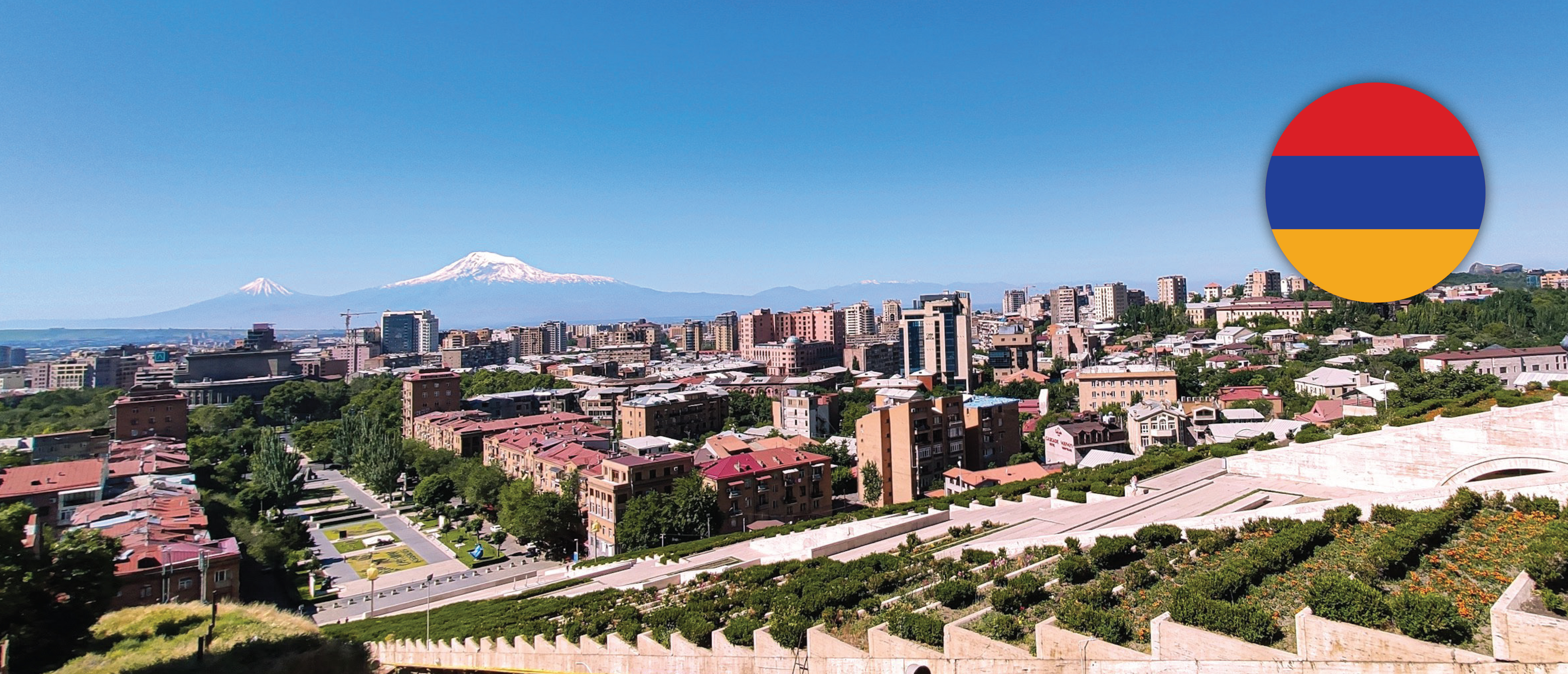General Information
Population
Immigration
Emigration
Working-age population
Unemployment rate
GDP
Refugees, Asylum seekers, IDPs
Citizenship
Territory
Migration Authorities
Responsible Body
Line Ministries
Agencies
Key Policy Documents
Armenia Transformation Strategy 2050
2014-2025 Strategic Program of Prospective Development
Government Programme 2021-2026
National Security Strategy of the Republic of Armenia
The Conceptual framework of the Republic of Armenia for the state
2017-2021 Action Plan for Ensuring Border Security and Integrated State Border Management
Description
The Republic of Armenia has one of the highest emigration rates globally, with an estimated 7 million Armenians living in over 100 countries. Historically, this considerable exodus occurred by virtue of various political and socioeconomic factors within the country.
Labour migration constitutes a viable option for many Armenians, with the Russian Federation being the prime destination. Most Armenian migrants move to urban areas in Russia for employment purposes and typically return home within three to twelve months. In 2021, the number of Armenians who registered their place of residence in Russia exceeded 150,000. Of these, 73% were employed, 20% had family reunification status, and 3% were in Russia for educational purposes. Armenia largely benefits from the resulting remittances, amounting to 7.6% of the GDP in 2023.
Along with Russia, other post-Soviet countries, several EU Member States, the US and Canada are home to the largest ethnic Armenian communities. Since 2019, Poland, Germany, Spain and France issued the lion’s share of first-time residence permits to Armenians within the EU. In 2023, Armenians received 9,942 first-time residence permits in the EU, according to the preliminary data. Poland granted most of these residence permits for work reasons (2,643), followed by Spain (230), France (746) and Germany (652 for family reasons, and 893 for other reasons). As most of the work permits Migration of Armenians to Poland is mostly temporary, given that most (2,102) first-time permits were issued for the period from 6 to 11 months. Meanwhile, migration to France and Germany tends to be more long-term, as also confirmed by the number of all valid residence permits at the end of 2023. Some Armenians have also sought legal status in the EU through asylum applications. The peak in applications (8,465) occurred in 2016 with many applicants being Syrians of Armenian ethnic origin holding dual citizenship. While asylum applications declined to 1,875 in 2020, they rose again reaching 6,105 in 2023.
The year 2022 was marked by a significant increase in migration flows towards Armenia, facing the influx of primarily Russian nationals, largely due to Russia’s invasion of Ukraine. That year, 16,658 foreigners acquired residency status in Armenia, a fourfold increase compared to 2021. The number of individuals granted permanent residency increased by 2.5 times, while the number of foreigners with temporary residency status saw a fivefold rise, when compared to the previous year. 58% of those granted permanent residency in 2022 in Armenia were Russian nationals, with citizens of Iran, Georgia, and Ukraine also receiving a significant share of such permits. About 56% of foreigners who received permanent residence did so based on their Armenian ethnic origin, while 21% were granted residency due to their entrepreneurial activities in the country. The number of foreigners granted Armenian citizenship in 2022 rose by 150% compared to 2021, while the number of individuals renouncing their Armenian citizenship fell by approximately 22%. Three-quarters of the new Armenian citizens were previously Russian nationals, and 98% of those granted Armenian citizenship were of Armenian ethnic origin.
Compared to the previous four years, the number of individuals seeking asylum in Armenia nearly quadrupled in 2022. While the annual asylum applications ranged between 200 and 260 from 2018 to 2021, in 2022, 964 foreigners and four stateless individuals applied for asylum. Of these, 358 foreigners were granted refugee status. Ukrainian citizens accounted for half of asylum seekers in Armenia, with approximately 60% of them being granted refugee status. A larger number of asylum seekers also came from Iraq and Iran. Following the military operation of Azerbaijan in the Karabakh region in September 2023, 100, 490 Karabakh Armenians fled the region for Armenia.
In 2022, 817 Armenian citizens returned to Armenia, 92% of whom were voluntary returnees, who applied for reintegration programs. Of these, 69% received social assistance, 27% received business assistance, and 4% received employment assistance. The return rates of irregular Armenian migrants from the EU have increased but ever slightly from 22% in 2021 (550 out of 2,530 persons who were ordered to leave actually returned) to 24% in 2023 (680 out of 2,860 persons returned). Most of the returns in 2023 were ordered in France, Germany and Belgium. A comprehensive national strategy for the reintegration of Armenian nationals and the integration of migrants, asylum seekers, refugees and IDPs remains to be adopted.
Armenia has endorsed the Global Compacts on Migration and Refugees and is a member state of the Prague Process. In July 2024, the EU initiated a dialogue on visa liberalisation with Armenia, marking a significant step towards a visa-free regime with the EU. In recent years, the Armenian government has prioritised further development of migration policy, including through the IMPACT project, implemented as part of the EU-funded ‘Local Empowerment of Actors for Development’ (LEAD) initiative, where ICMPD is partnering with UNDP, Austrian Development Agency and FAO. Since the end of 2022, the management of migration processes has been transferred to the Ministry of Internal Affairs, with the Migration and Citizenship Service restructured as a subordinate entity under the Ministry.
